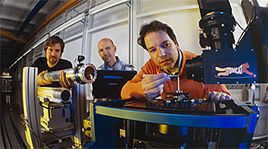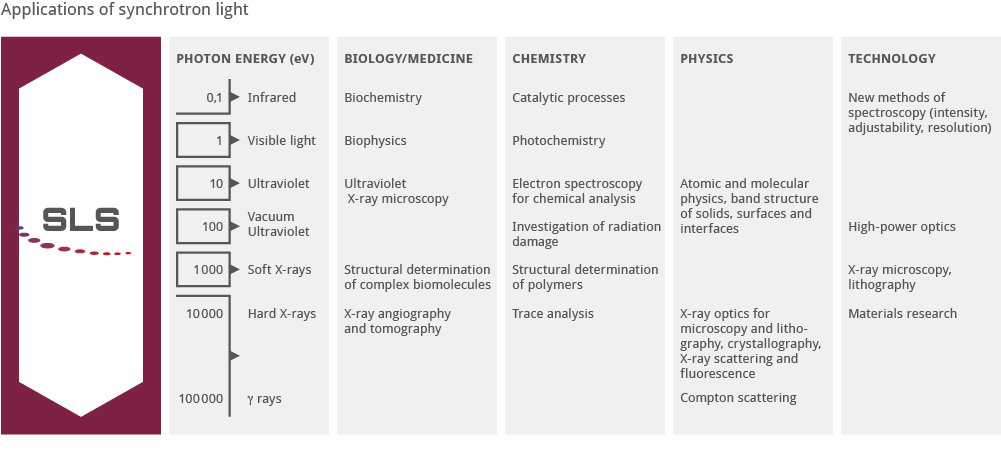Synchroton light source
What is synchrotron light?

Synchrotron light is electromagnetic radiation, with wavelengths ranging from infrared and ultraviolet to hard X-ray. The light is directed onto samples to analyse them.
Synchrotron light is generated inside a research facility where magnets are used to maintain electrons travelling close to the speed of light on a circular trajectory, from which they emit photons of light. Many experimental techniques available at the SLS are only possible at a synchrotron. These techniques take advantage of the extremely bright, tightly focused and tuneable nature of the synchrotron light produced at the SLS and thus provide critical tools for the investigation of structural and chemical compositions of a wide range of materials from the atomic to the cellular levels.
Applications of synchrotron light at the Swiss Light Source for industry customers
Benefits of using the Swiss Light Source
Application areas
Biology / Medicine
|
Chemistry
|
|
Discover moreApplication examples in the Healthy Ageing theme Diffraction techniques with synchrotron light
|
Discover moreApplication examples in the Chemistry theme Application examples in the Environment and Climate Science theme Spectroscopy techniques with synchrotron light
|
|
Physics
|
Technology
|
|
Discover moreApplication examples in the Advanced Materials sector |
Discover moreApplication examples in the Energy theme |

